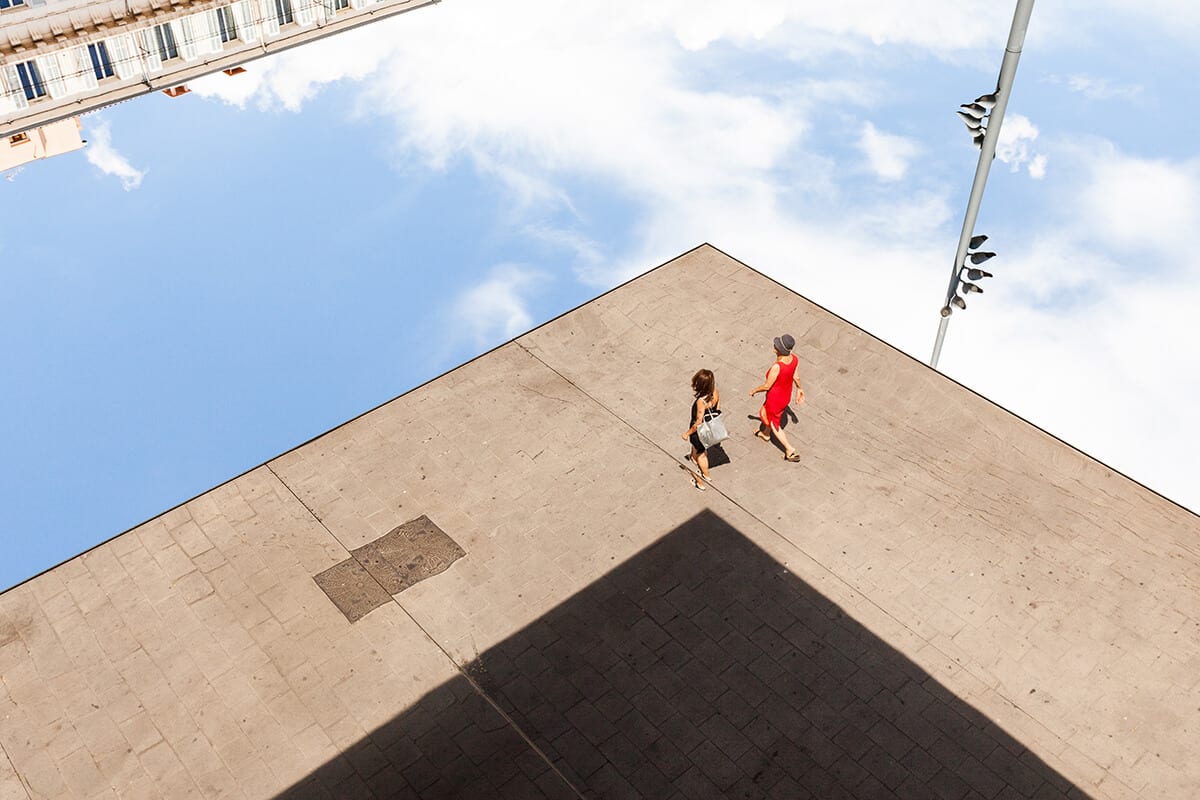EDITORS’ PICK
A Life of Possibilities
OPEN CALL
Open Call Editors’ Pick
Following Martin Parr’s selection of winning images for our OPEN CALL, this compilation of 20 images, selected by the Life Framer editors represents some of the other talented photographers whose work struck us and left a mark. Each a stunning image worthy of exposure and attention…
These are intended to be a conversation starter… so feel free to join the discussion on our social networks.
BANNER IMAGE COURTESY OF MARTIN GRABNER
www.martingrabner.com / @martingrabner
“Miroir Social: The de-contextualised, fragmented and distorted image of a surrealist mirror gives a subjective visibility to social relations encrypted in space and built space determining social behaviour. It makes social space visible.”
Editor’s comment: A wonderful play on perception, the angle and tight framing of this mirrored canopy grants a surrealist perspective to the world of built space and social behavior.
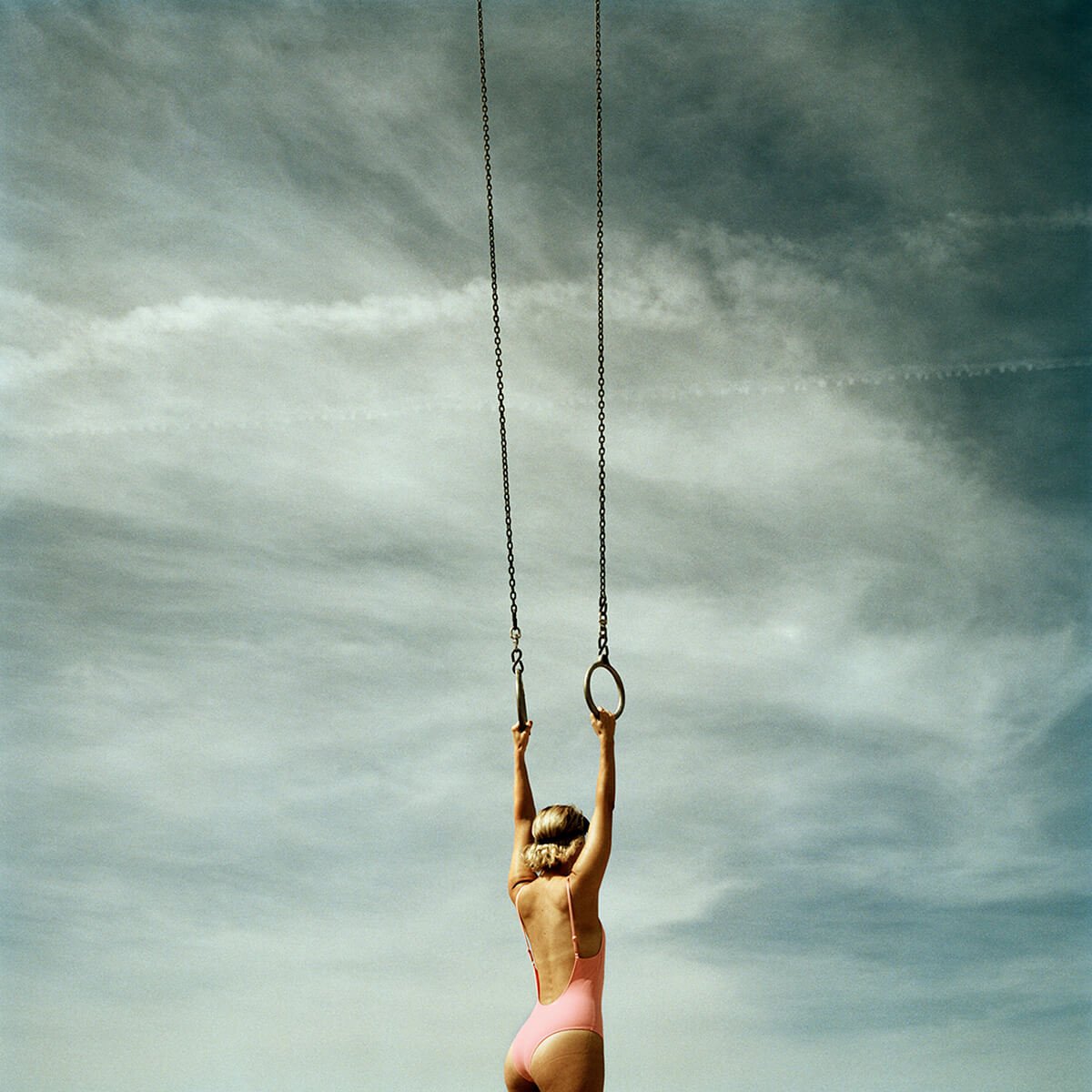
IMAGE COURTESY OF ANNELIE VANDENDAEL
www.annelievandendael.com / @annelievandendael
“A few years ago, I began to reconsider how female beauty could be represented by redefining the concepts of what is considered as being beautiful. At that time, in many magazines, women had to be perfect, beautiful and slim. I hate images that are too manipulated! It is my personal goal to show the truly genuine beauty of people, including their imperfections. That’s what gives them their uniqueness. The authenticity of the human body speaks for itself, the faces are an unnecessary impediment. Personalities are revealed through poses, landscapes or colours.”
Editor’s comment: A very creative point of view and composition where the cropping acts to convey a sense of mystery – the viewer doesn’t know what the subject is looking at, what’s below her, or what she’s hanging from. It’s hard to know where she is and what lies in front of her. It feels free, expansive and enigmatic.
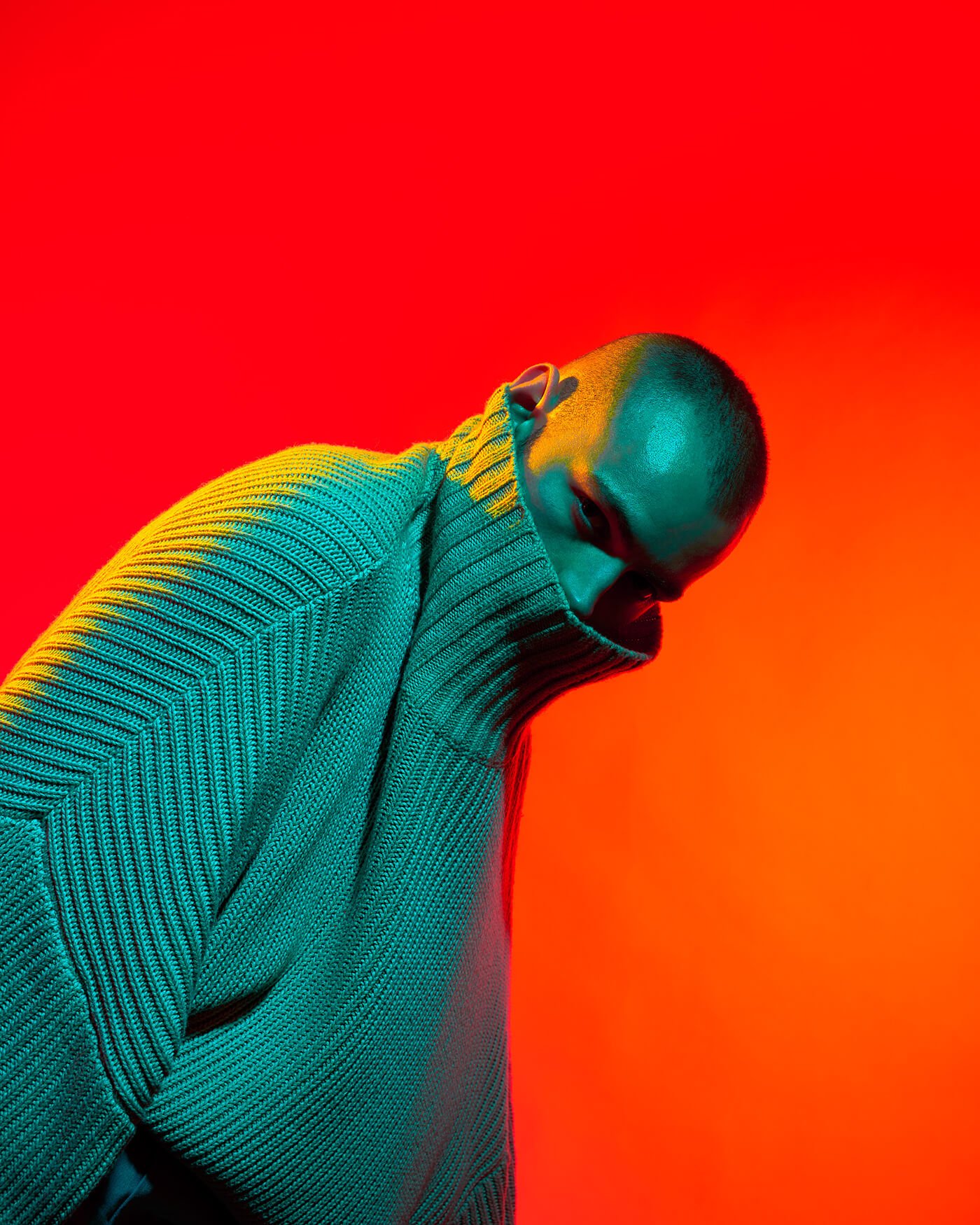
IMAGE COURTESY OF ADRIAN WOJTAS
www.adrianwojtas.com / @adrianwojtas
Editor’s comment: Bright, popping colors bring out stark emotion. While not quite complementary, the red-blue juxtaposition makes for heightened emotion that works well with the subject’s posture and expression, and the way he rises out of the bottom corner of the frame is quirky and expressive.
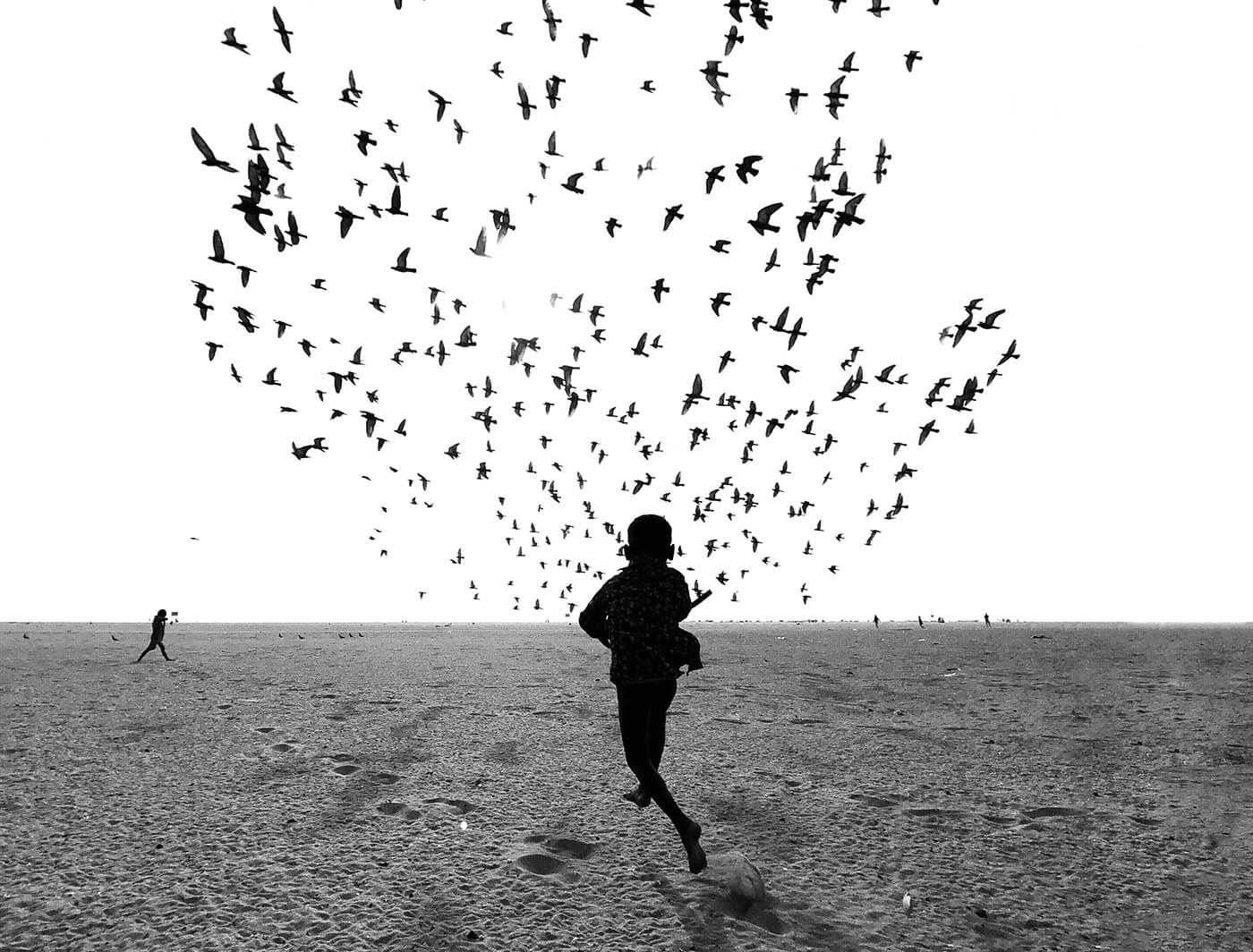
IMAGE COURTESY OF DIMPY BHALOTIA
@dimpy.bhalotia
“We Run. You Fly.”
Editor’s comment: “We Run. You Fly” is an apt title for this image. Both dynamic and haunting, Dimpy has done a great job of capturing emotion through action. The starkness of the silhouette is contrasting as well as compelling with its surroundings. Capturing childhood fun in such a way make for a powerful dichotomy between the familiar and the enigmatic.

IMAGE COURTESY OF JOAQUIN LUNA
www.lunajoaquin.com / @joaquinluna__
“From the series Nada ha Cambiado (Nothing has Changed) (work in progress). “I want you to know that everything is the same, except me, I changed some time ago. I have managed to show my feelings. I learned to express my pain and to be able to breathe, I have also learned to smile, with what it cost me, do you remember? But nothing really important has changed, the cover of the rocking chair remains the same, the sound of the radio continues to accompany my nights and the words are still lost amid tremors when I talk about you. By the way, I also learned to write”.”
Editor’s comment: A complex image where every element has meaning. The composition is neatly done with the diagonals firmly in place both directions. I especially like how the framing of the picture of the younger woman resembles the doorway framing the older woman. Excellent story telling that speaks of ageing, love and loss.
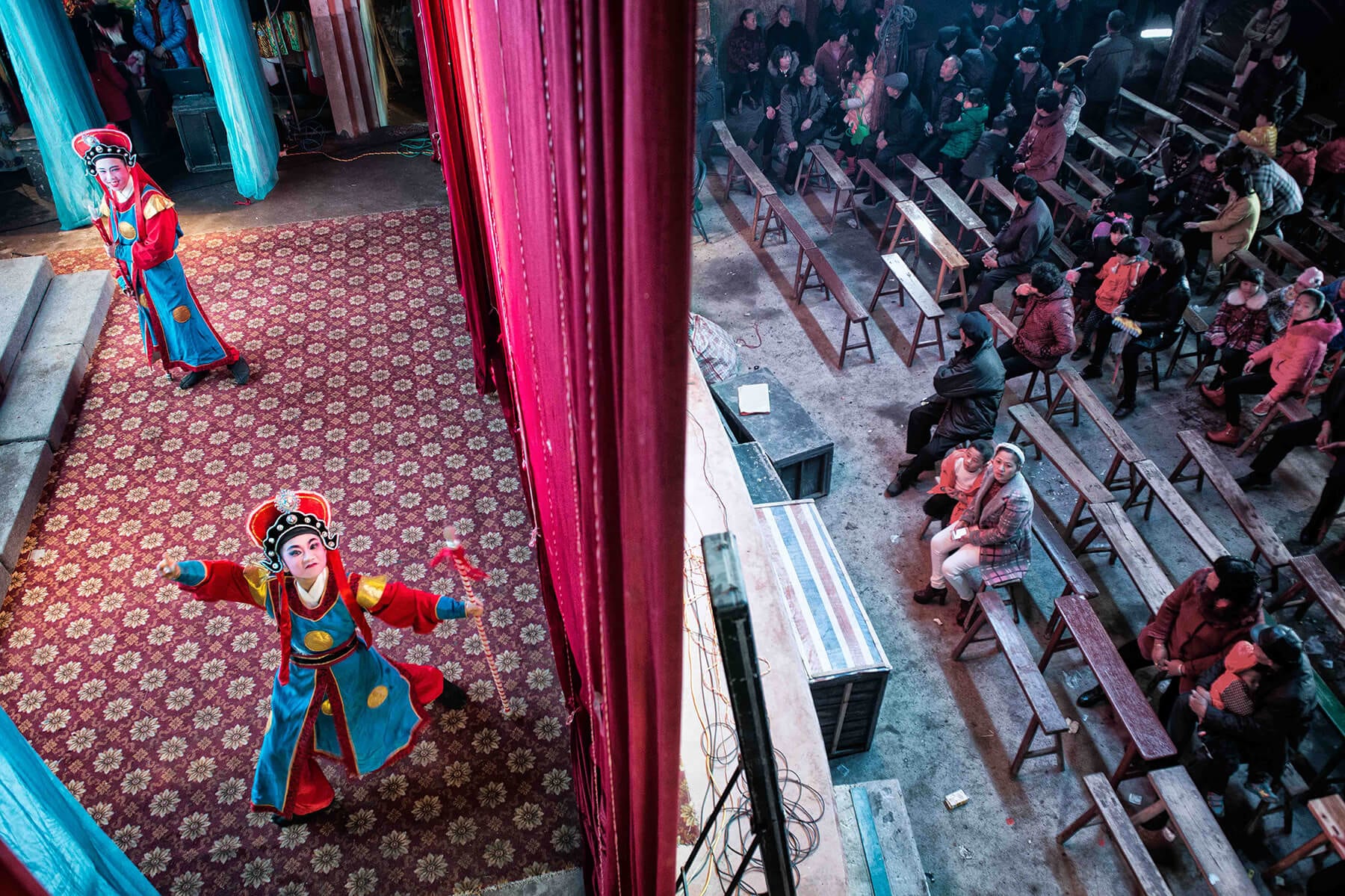
IMAGE COURTESY OF ATTILA BALOGH
www.attila.photo / @guczo
Editor’s comment: An interesting and dynamic juxtaposition with the curtain dividing the worlds between the colorful and the staged on one side, and ordinary life on the other. Yet the photographer isn’t invisible. On the contrary, people from both side of the curtains are aware of Attila’s presence which has interesting ramifications.
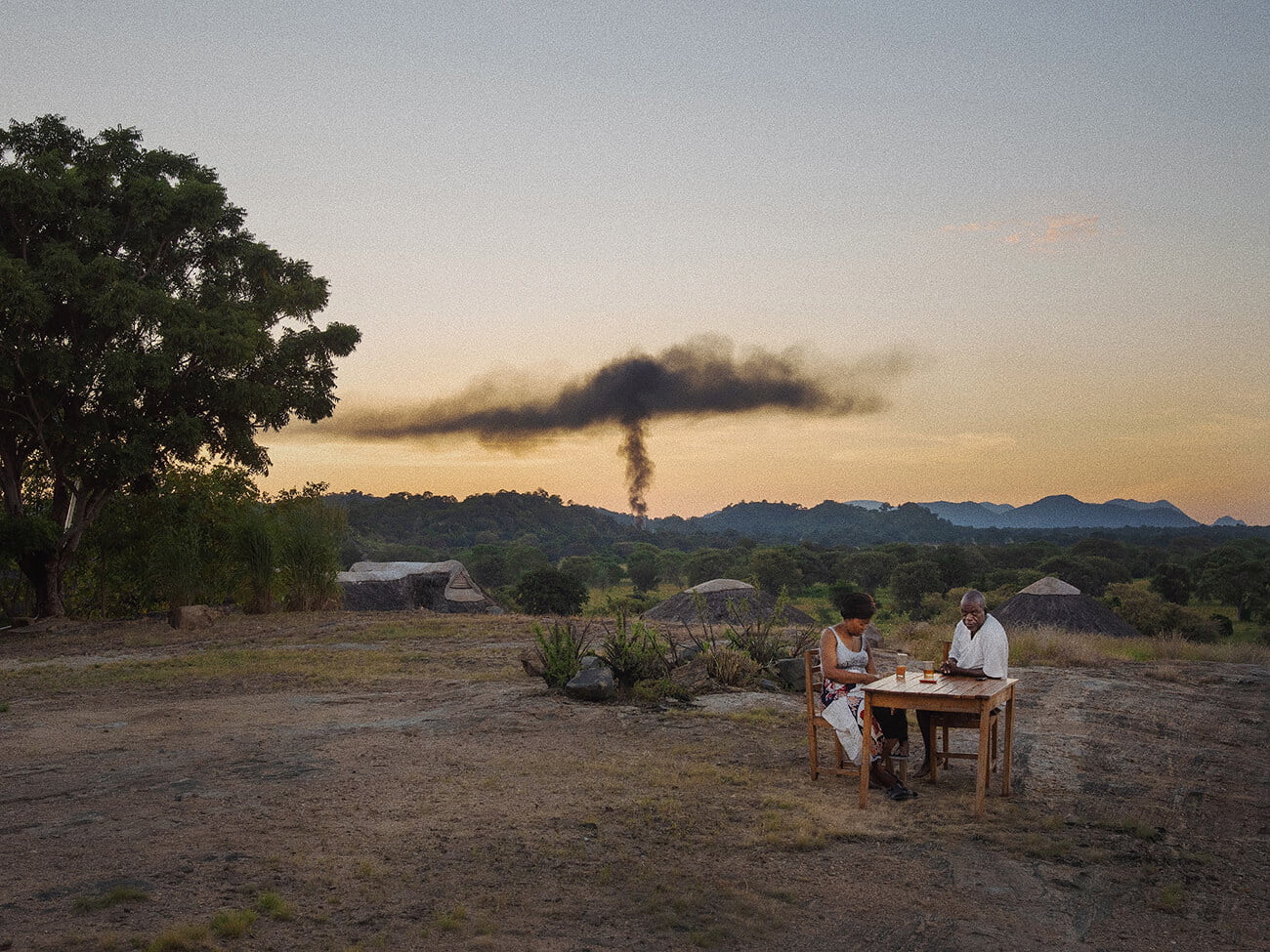
IMAGE COURTESY OF TAKANORI KAWAHARA
@takanori_kawahara
“You look at me. That tells me I am here. We both nod heads without any words. You know, make a way for the positive day. Cause it’s a new day” I heard that greeting of the people of “the warm heart of the Africa” in the wind.”
Editor’s comment: A bit of creative storytelling to go alongside a poetic statement. The background smoke could be benign or threatening, but life goes on in the foreground. The posture of the subjects also adds to the interest – one lost in her own world, and the other distracted by Takanori’s lens. The connection between them is off, despite them seemingly only having each other in the vast vista.
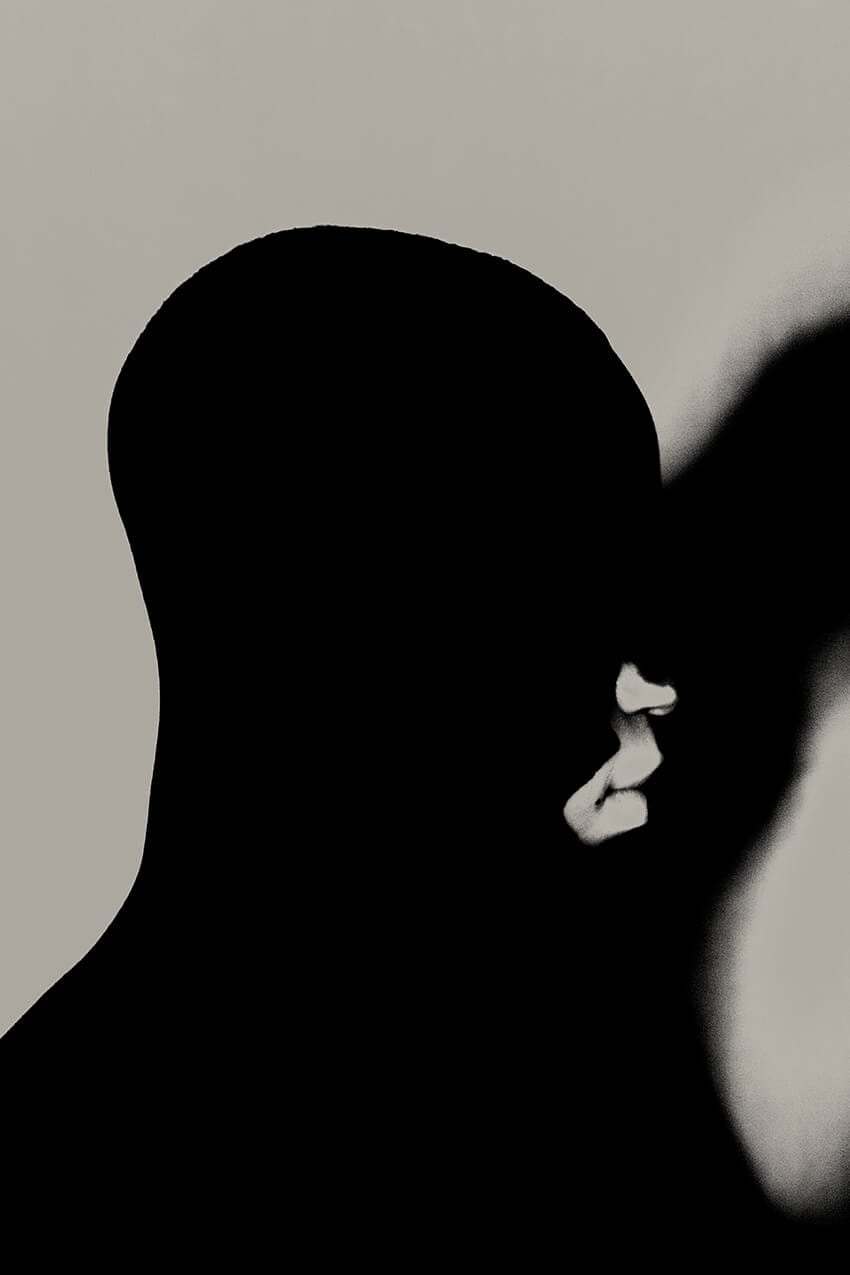
IMAGE COURTESY OF SARA PUNT
www.sarapunt.com / @sarapuntcom
“From the series What do you see when you’re not looking? An ongoing exploration of the human body, essence and form. A form that changes, when you change your perspective on it. In this day and age, our bodies are still overly sexualised in our everyday lives. From a young age, we learn to view ourselves through the eyes of the public, instead of the eyes of our true selves. Because of that, we keep ourselves from making some of the most important connections we can experience in this world. The connection to who we truly are, to being present within our physical form and using it to make the ones around us feel something real. Something that doesn’t consist of ego and judgement, but of empathy and kindness. Inspired by the eyes of a sculptor, this project explores the concept of creating shapes and forms, with and within our bodies, that can only be seen when you stop looking through the eyes of the public. Creating images, like building sculptures, with the bodies we’ve been given and with the purpose to challenge the eye, and to make us feel something real. It captures raw lines, calm movement and natural distortion. These patterns represent the transformation we all go through as creative beings.”
Editor’s comment: A beautiful, poetic treatment of the human body that evokes the aesthetic of the photogram technique pioneered by Man Ray. The contrast of dark and light, hard edges and soft focus, is just exquisite.
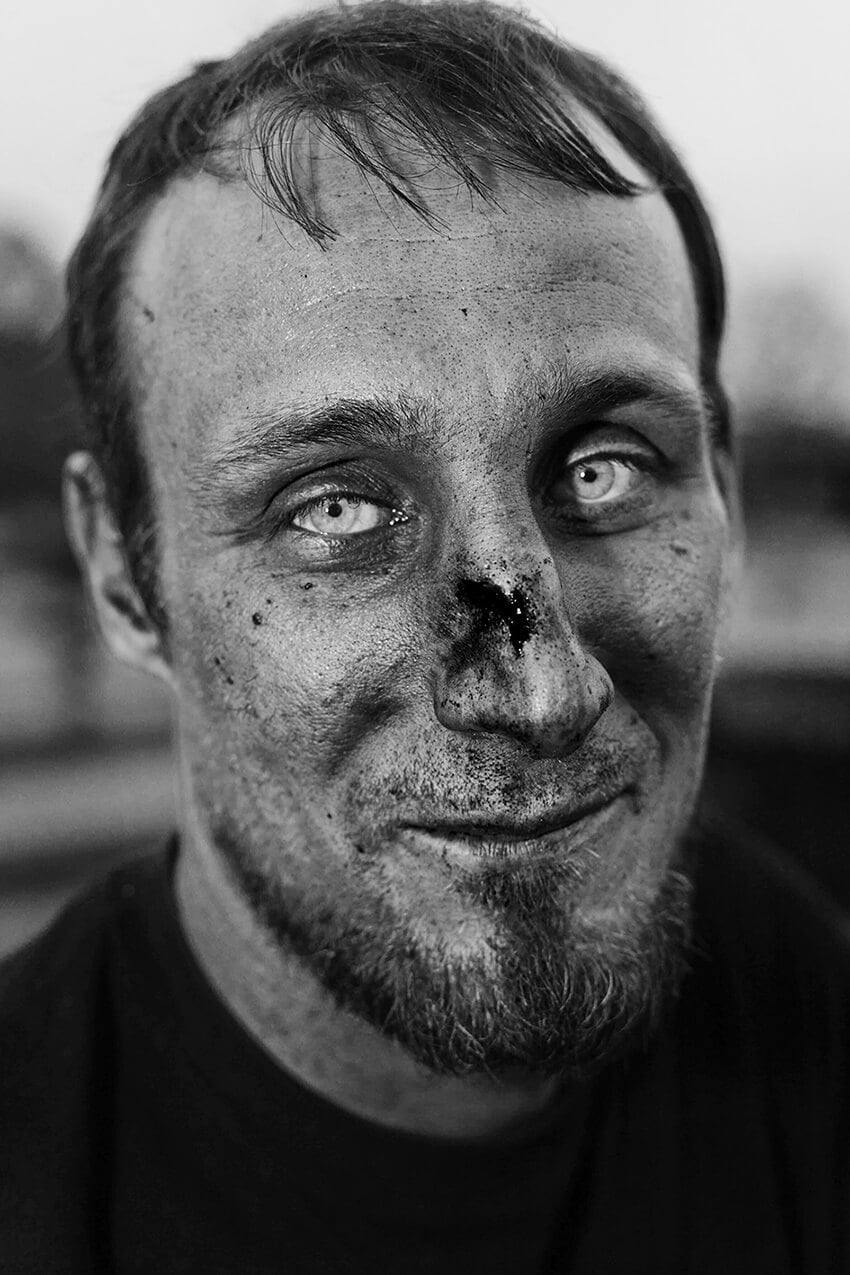
IMAGE COURTESY OF SEBASTIAN STEVENIERS
www.sebastiansteveniers.be / @sebastian_steveniers_photo
“From the series Bosfights / Live Free. Fighters who volunteered to fight for the colors of their club recently found a new home: remote forests. Teams compete with each other in a very organized way, with rules – and strict secrecy. Why do these men do this for pleasure? Three years ago I decided to make an attempt to gain access to this hermetically sealed world. The doors opened increasingly hesitantly for me. But the search swallowed me up more than I could ever have imagined. In April 2018 I was arrested and I ended up in jail for three weeks. Police and justice do not believe that I am investigating this subculture, but believe that I am involved. All my images were confiscated. Until today I received nothing in return. Still I worked on. By searching for the material that I had already sent, I was able to recover a small part of years of labor. Of the thousands of images I have saved forty, sometimes of poor quality. The reason why some faces are blurred is because certain people do not want to be recognizable for legal reasons. My goal was once to document forest fights. Against my will, I have become part of my work myself.”
Editor’s comment: Taken from Sebastian’s investigation into a troubling subculture of organised bare-knuckle fighting, this is a powerful and complex portrait that challenges our preconceptions. Caked in dirt and blood, the subject’s piercing pale eyes cut through the darkness, but it’s his expression – something knowing, kind and playful in it – that perplexes when taken in the context of his hobby.
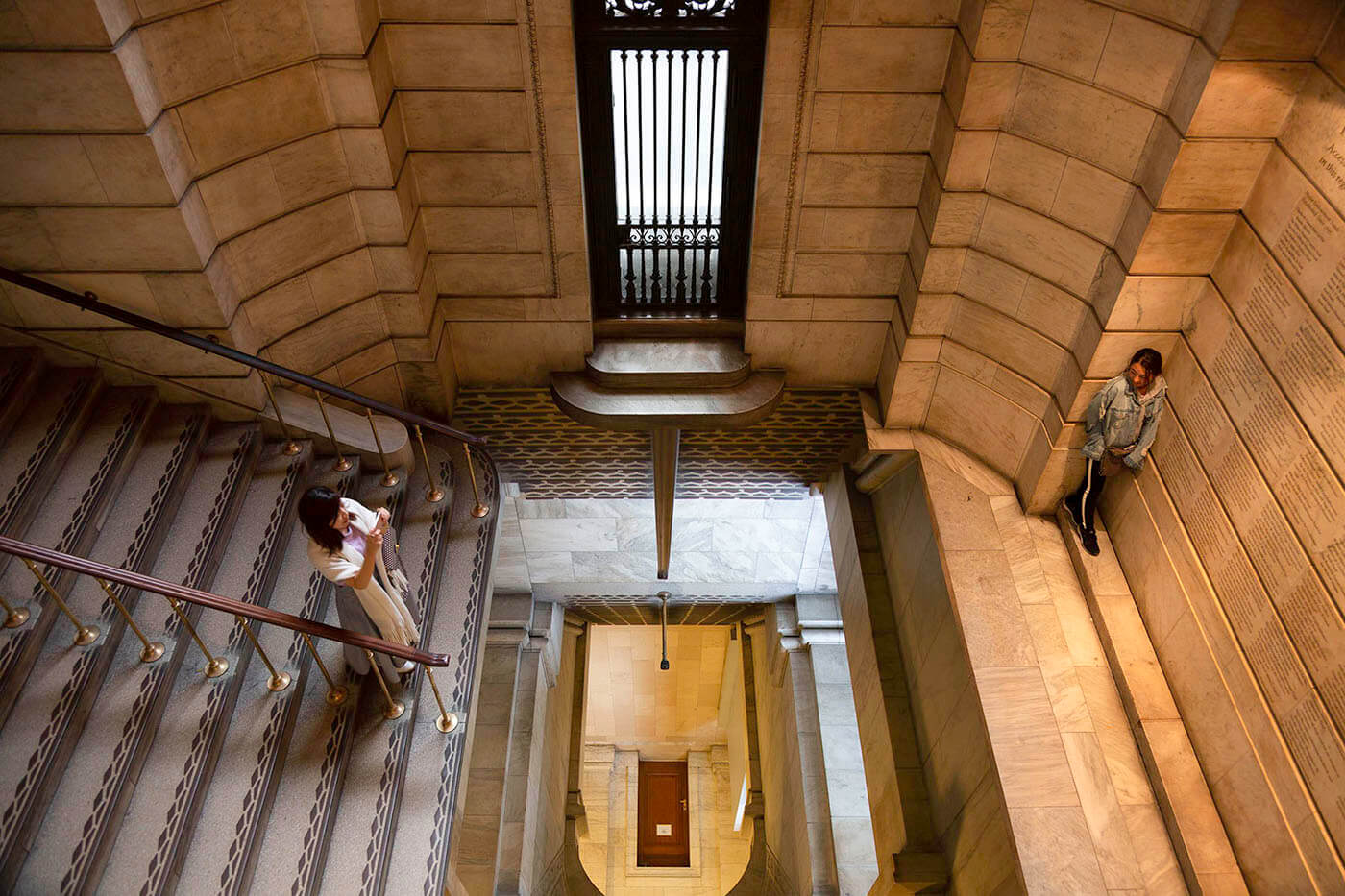
IMAGE COURTESY OF CHRISTOPHER SHEILS
www.eclecticlight.biz / @christopher_sheils
“From the series Fake Views. It took me years of study into visual perception and then another for years to work out how to create illusions of depth perception in photography. The images create a false reality to deliberately interfere with the brains perception due to inverting objects to not conform with learned visual cues of depth. Metaphorically, The false realities symbolise the misinformation and deceit characteristic of right wing populism creating a false societal reality to manipulate the vulnerable and ignorant.”
Editor’s comment: The geometric perspective in this is reminiscent of an Escher painting. Thematically, the subjects being in opposition to each other – in position, in the lighting, and in their emotions – creates an added dimension of story to an already fascinating optical illusion.
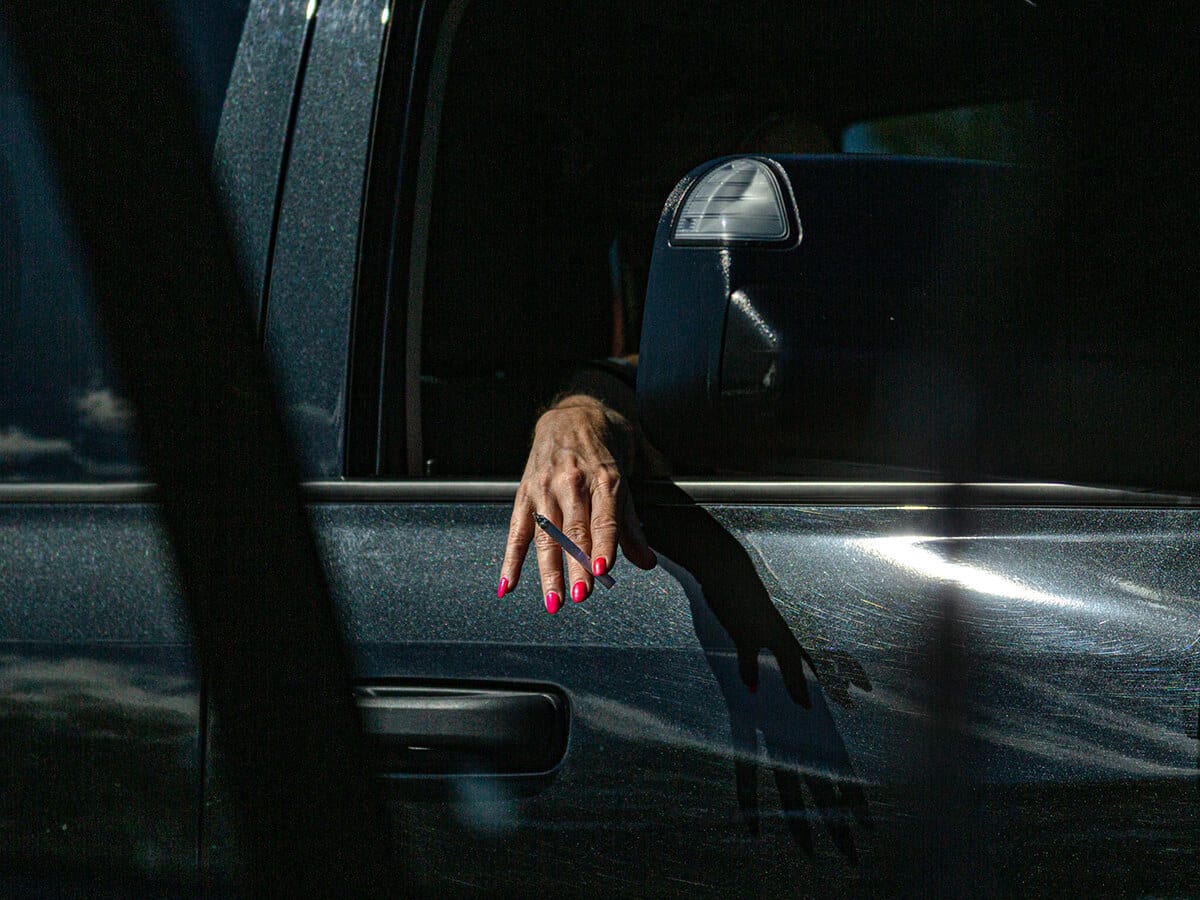
IMAGE COURTESY OF TOM SHARMAN
www.tomsharmanvideo.com / @tomsharmanvideo
“”What doesn’t kill you makes you pinker”. A quick candid shot from one car to another, while on a trip through Tempe, Arizona last September. I think my photo kind of sums up American culture in a way. Plus the pink nail polish caught my eye and had a very Martin Parr-esque look to it.”
Editor’s comment: An excellent candid capture with a noir-like sense of intrigue. The pink of the nail polish contrasts deliciously with the darkness of the car and the implied darkness of the hand’s posture, its shadow, and the cigarette.
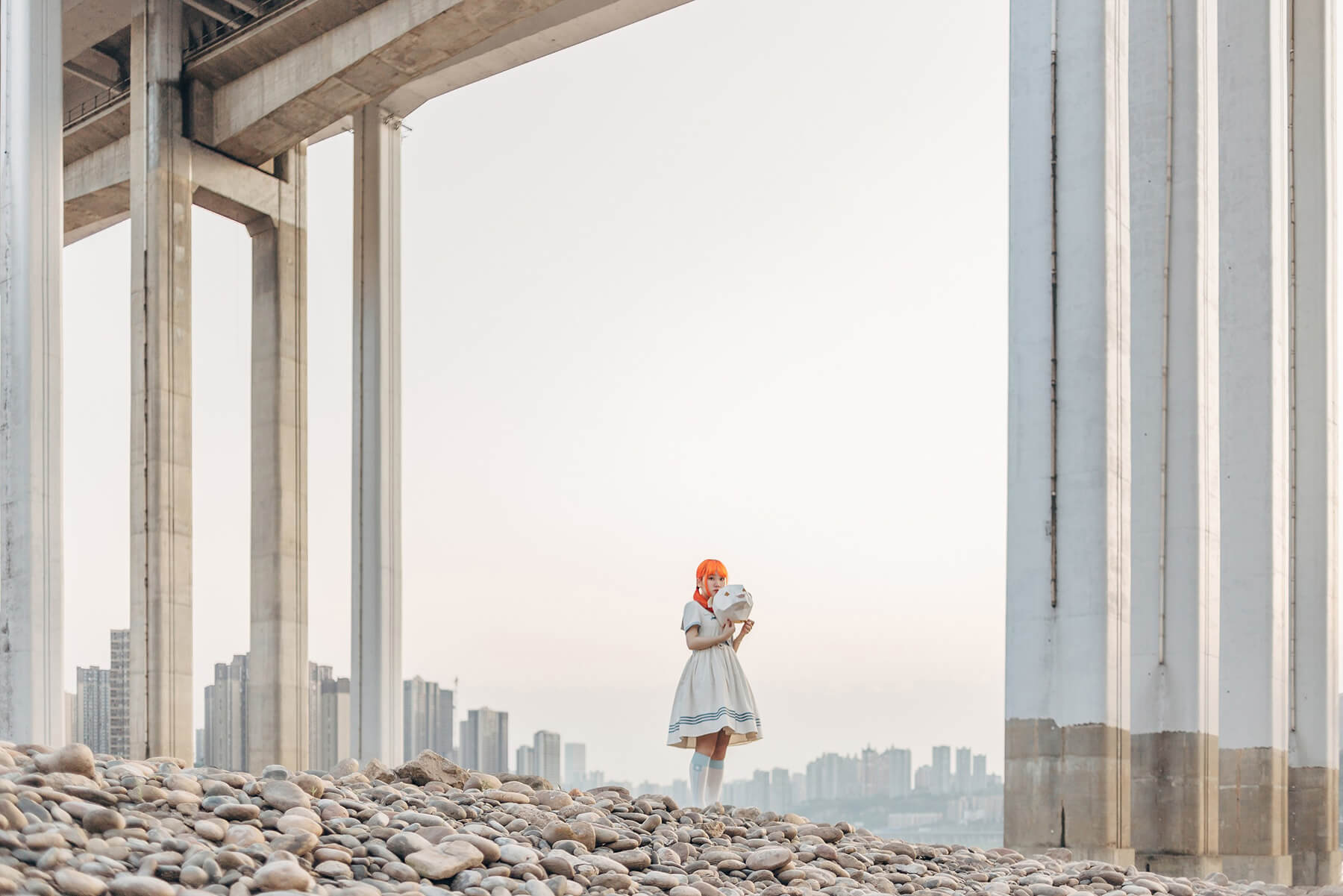
IMAGE COURTESY OF TALES YUAN
www.talesyuan.com / @talesyuan
“From the series Another Self. Part of my ongoing project about Nijigen teenagers in China. As a kind of subculture, Nijigen culture is becoming more and more popular among young people in China. With the deepening exploration of this photography genre, I began to notice that there is a problem of mutual understanding between the subcultural and mainstream groups. This state will be different results at different times and places, or by different observers. The consciousness makes an individual of identity. Subconsciously, we have another self-individual. How do we look at and describe ourselves? The true self is hidden in the unconscious, so which one is the real self? The desires and emotions of the ego ultimately make us connect with them.”
Editor’s comment: The attention to detail in this image is exquisite – everything from the patterns on the girl’s stockings to how her expression matches the expression of the item she’s holding. The framing is also quite creative – the subject is centered but it feels as if she’s on one of the thirds. A beautifully executed way to explore a fascinating part teenage sub-culture and the psyche of such teens in China.
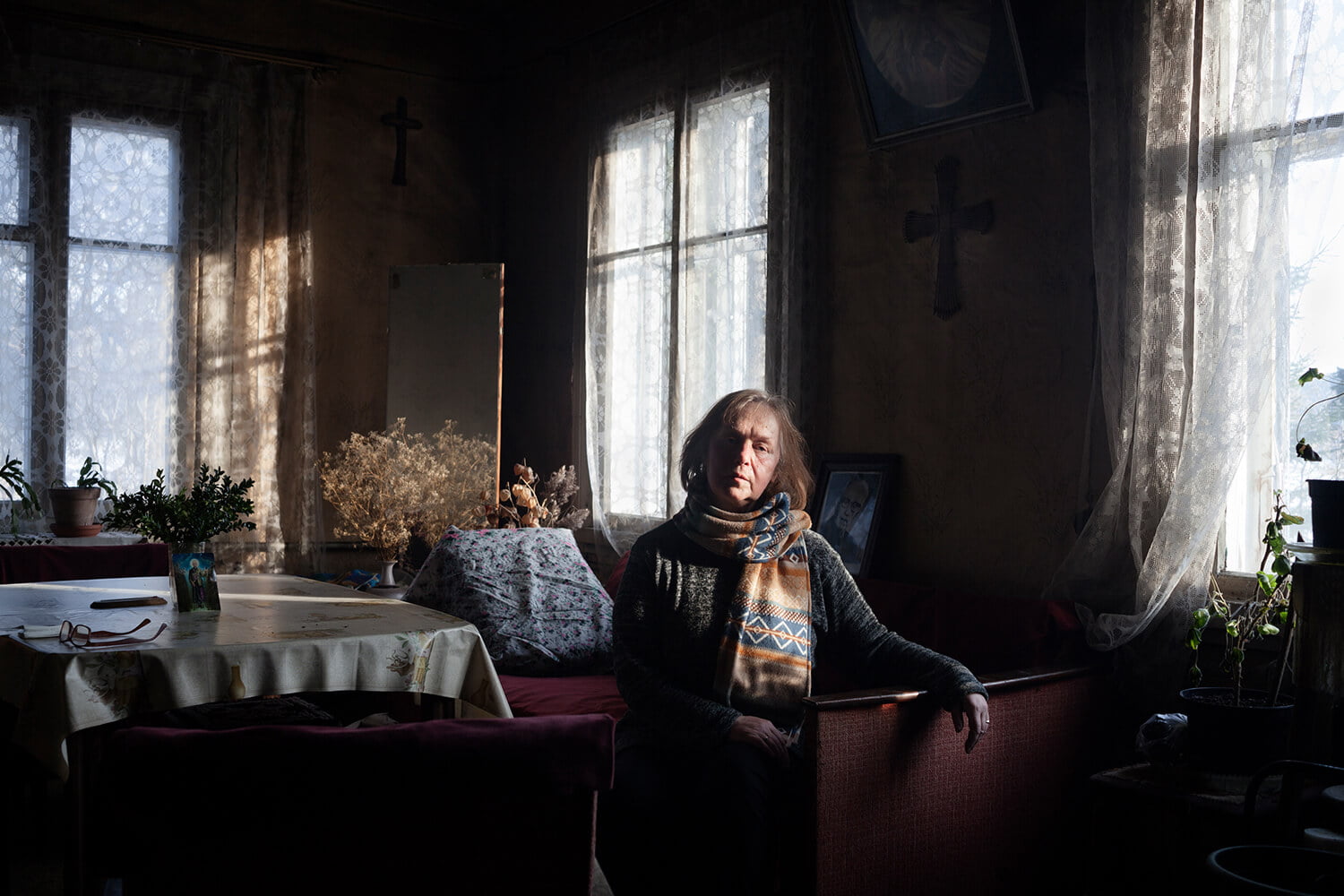
IMAGE COURTESY OF KLAUS RICHTER
www.klausrichter.at / @klausleorichter
“From the series Bajorai. Bajorai is an essayistic exploration of one village in Lithuania. My aim is to tell part of its story; about its past and present by combining photographs that I took in the last two years, scans of old photographs of the family albums from the people of Bajorai and a written text in the form of an essay inspired by interviews from the people and impressions of Bajorai”, says the artist. The decay odor becomes palpable when looking at the pictures of Bajorai. They portray objects that will soon be gone, in which the process of decomposition has already taken hold. Attention is drawn to materiality as well as transience by juxtaposing photographs where textile is the main component with reproductions of photographs from old family albums of the people of Bajorai that are printed on textile. In an essayistic form, the series approaches issues of trauma and an unresolved past while it speaks of forgotten people who inhabit a marginalised sphere of Europe, as well as of today’s Lithuanian society.
There are more then 40 villages called ‘Bajorai’ in Lithuania. It translates as ‘Noblemen’. In the case of this village nobody could tell me with certainty when and why the village got its name. One neighbour though has heard that the name reaches back to the times when Lithuania was under the rule of the Russian Tsar. In that time certain villages were freed from paying taxes but in return the oldest son and the strongest horse of each farm had to serve in Russia.
I gathered material by interviewing certain families of Bajorai (also all the old photos are from the family albums of those people). Based on the interviews I wrote a text, that mainly focuses on the family stories of the people. The text also tries to forge a bridge between now and then.”
Editor’s comment: Great use of both lighting and texture to bring out a narrative mood. It’s almost as if the light is opening up a door to a present that is slipping away – which compliments perfectly with the context of a marginalized, disappearing community that Klaus describes in is statement. The composition, with the crosses on the thirds and the repetition of them in the window frames, is also excellent.
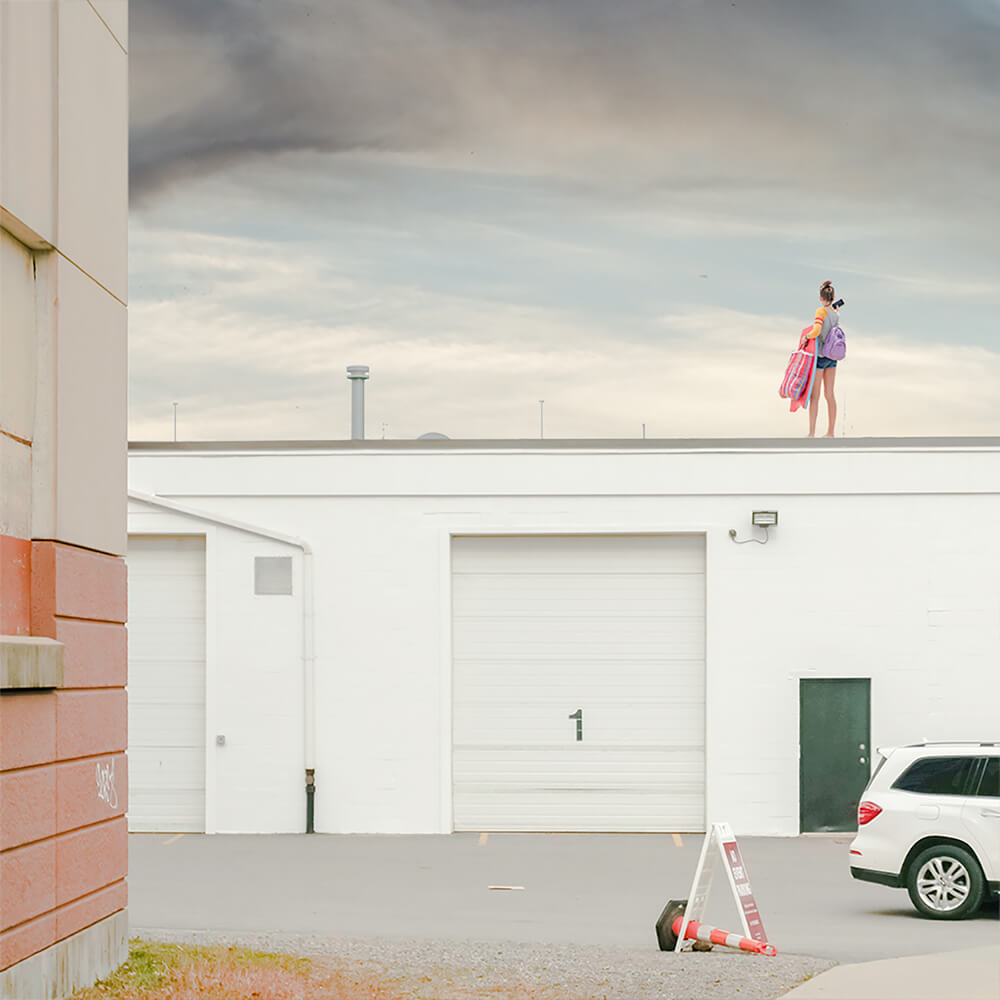
IMAGE COURTESY OF DIANA CHEREN NYGREN
www.dianacherennygren.com / @dianacherennygrenphotography
“Surroundings play a dominant role in shaping our experience. I treasure the city and try to make space for quiet contemplation within it. The series “When the Trees are Gone” imagines city dwellers searching for moments of relief in a world shaped by climate change, and the struggle to find a balance between an environment in crisis and manmade structures.The question of the struggle between nature and the built environment is ever more central in urban life. In these images, relaxed beachgoers find themselves amidst carefully composed urban settings in front of dramatic skies. They are searching without seeming to find what they are looking for. Peaceful moments of strolling along the beach or standing listening to the waves while choosing the perfect spot to sit down, are inevitably infused with tension and frustration. The beach becomes rising tides, threatening the very foundation of the city. The clash of nature and city results in an absurd profusion of visual noise and little relief. The resulting images lay bare challenges to both my urban fantasy and to city planners, and the problematic nature of the future that lies ahead for humanity and the planet.”
Editor’s comment: The framing and composition are quite unorthodox – the car half in/half out, the square crop, the subject not quite on the third – but that only adds to the theme of the image—the struggle to find balance between the human-made world of concrete and boxes and the natural world beckoning beyond. Excellent storytelling.
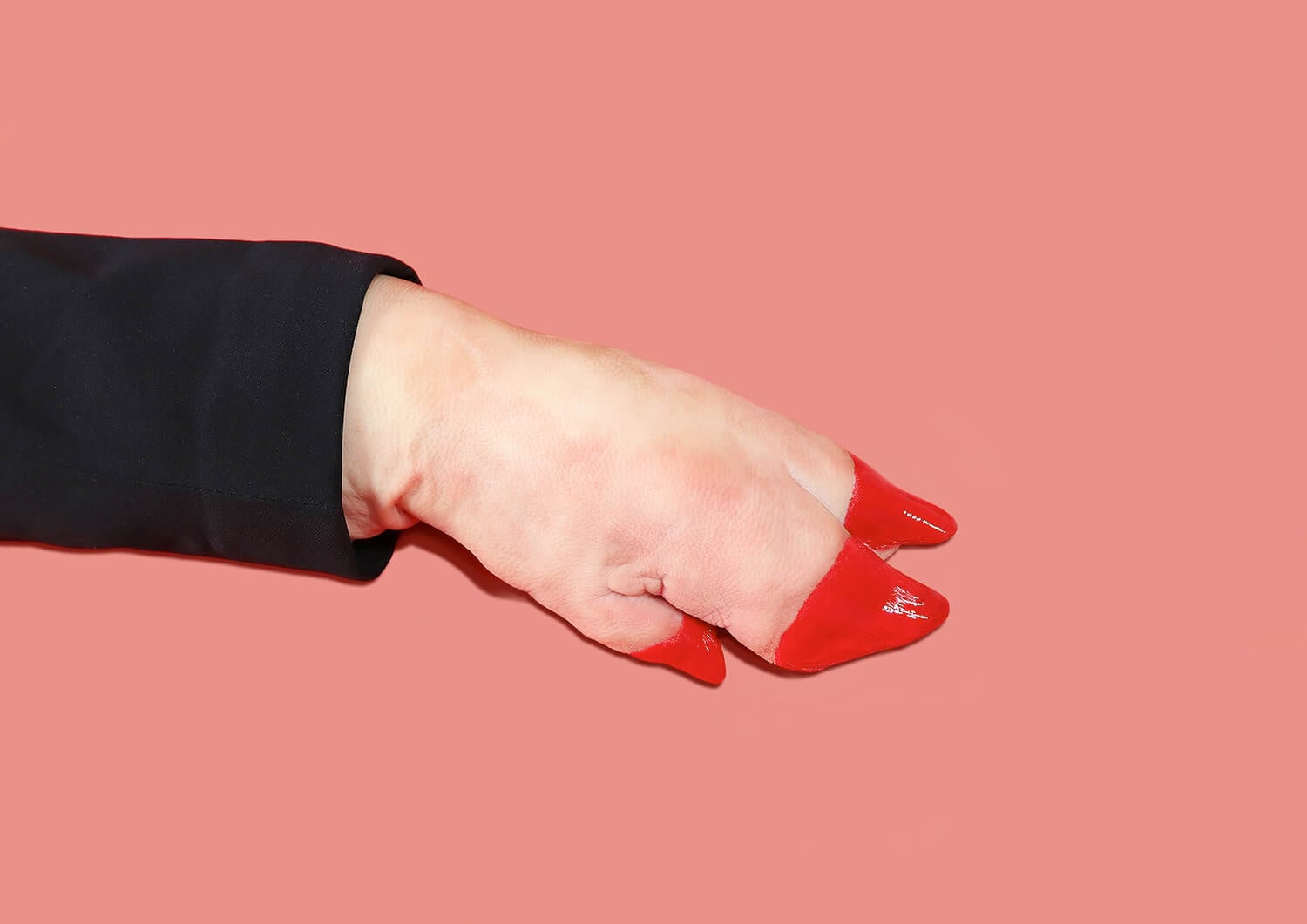
IMAGE COURTESY OF NICOLAS GASPARDEL AND PAULINE BAERT
www.beurkmagazine.com / @beurkmagazine
“We give food a voice, I think it has a lot to tell us about how we live and who we are. We work mainly with industrial food, and we try to give eternal beauty, both in the message and in the food used, to the ugliness that is everywhere on the shelves.”
Editor’s comment: An interesting and surreal commentary on our relationship with the meat industry, and particularly how it has become so industrialised and artificial over the last decades. Nicolas and Paulina are not afraid to leave empty space in the frame, and the clashing pinks and reds make for something simultaneously alluring and off-putting – an apt metaphor for meat-eating perhaps?
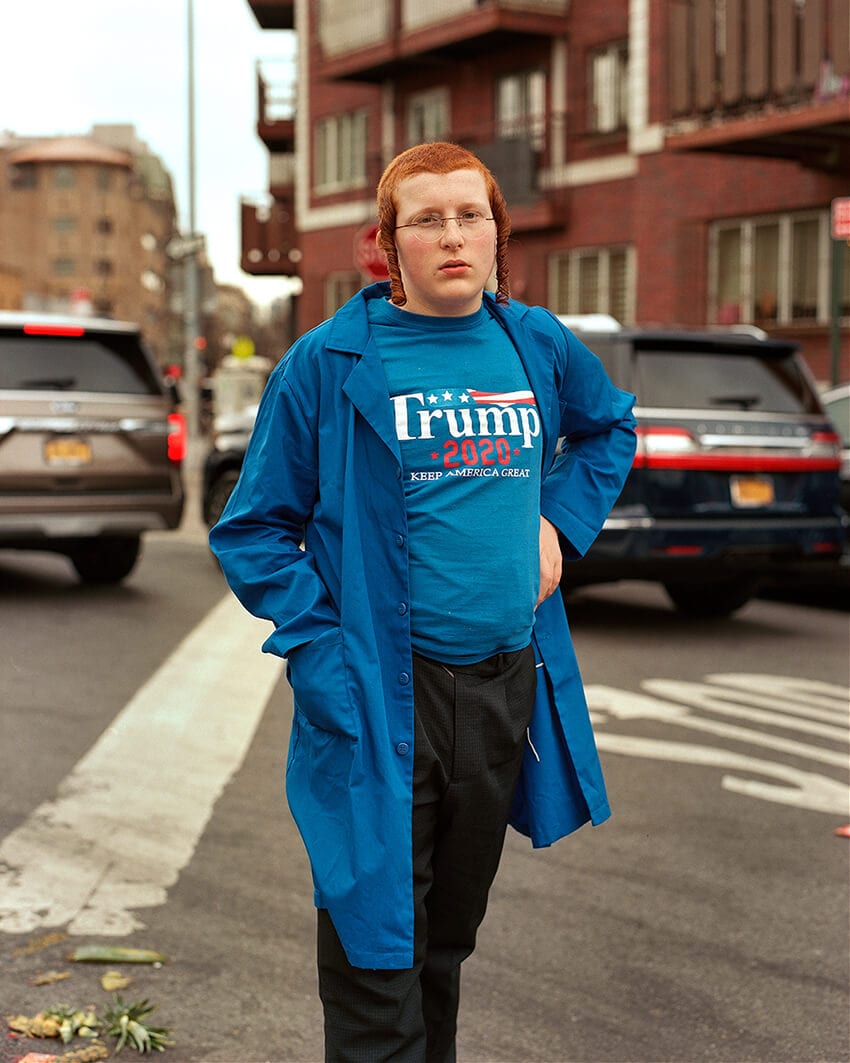
IMAGE COURTESY OF SARA LEWIS
www.saralewisphoto.com / @saradotlewis
Editor’s comment: Taken during the Jewish holiday of Purim in Brooklyn, New York, this is a brilliant, complex portrait of a young man. The bright blue of his clothing pops against his red hair and the brickwork behind, but the real dichotomy is sociopolitical – the brash, in-your-face world of the Trump campaign he promotes at total odds with the private and reserved community the boy comes from.
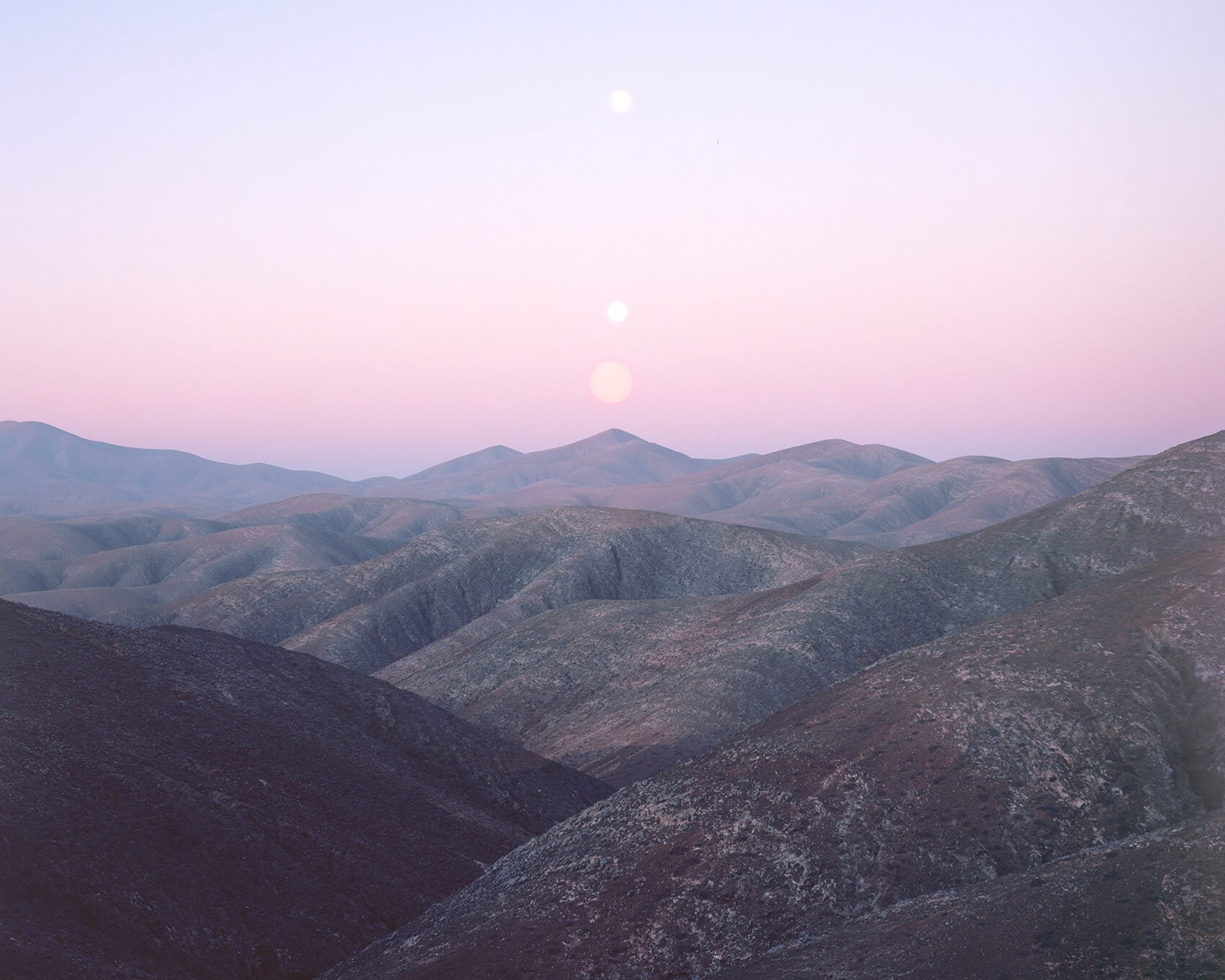
IMAGE COURTESY OF LUCA TOMBOLINI
www.lucatombolini.net / @lucatombolini
“Vistas is composed of multiple exposures shots on 4×5” negative film and Microscapes, high resolution scans of colours & solvents compositions, dealing respectively with our perception of Time and Space. Departing from my previous landscape works I aimed to create images that present an altered Time dimension, through the use of multiple and/or very long exposures. With these images, I wanted to suggest that the nature of what our brain feels as the flowing of Time is more likely to be a different entity which doesn’t share the same qualities that we naturally perceive, and of which we cannot get to understanding at the moment. Through multiple exposures I played with the position of Sun and Moon which are the celestial bodies that naturally set the length of our day and month; while the use of very long exposures created scenes with light gradients that didn’t exist within conscious perception. Similarly, but dealing with Space, the high-resolution scans reveal new landscapes that exist on a scale too minute for the naked eye to see. Yet I’ve tried to find in that micro space the same aesthetic qualities I normally search in a landscape.”
Editor’s comment: Masterful use of multiple exposures to blur the passing of time and create a surreal “now.” The result is strange and otherworldly, with the pastel coloration imbuing it with a sense of gorgeous tranquility.
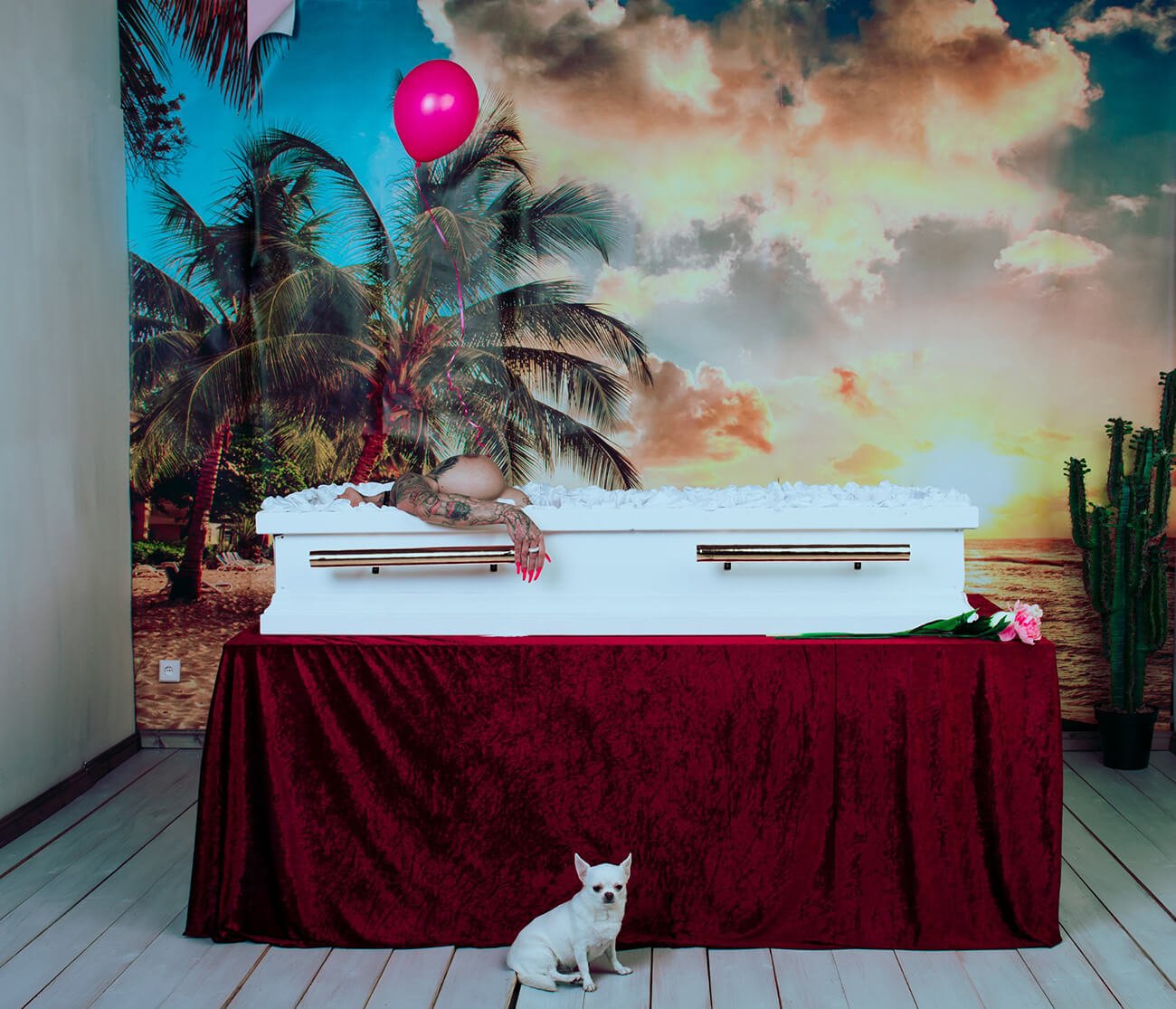
IMAGE COURTESY OF JULIAN PAUL UMBACH
www.julianpaulforneverandever.com / @julianpaulforneverandever
Editor’s comment: While the colors are the first thing one is drawn to here, the strangeness of the funeral scene is what eventually becomes most compelling. The little white dog and the balloon add to both the color and the mystery. Bizarre but somewhat captivating, and a compelling document of a bold and eccentric end to life. One can’t help but imagine the life lived beforehand.
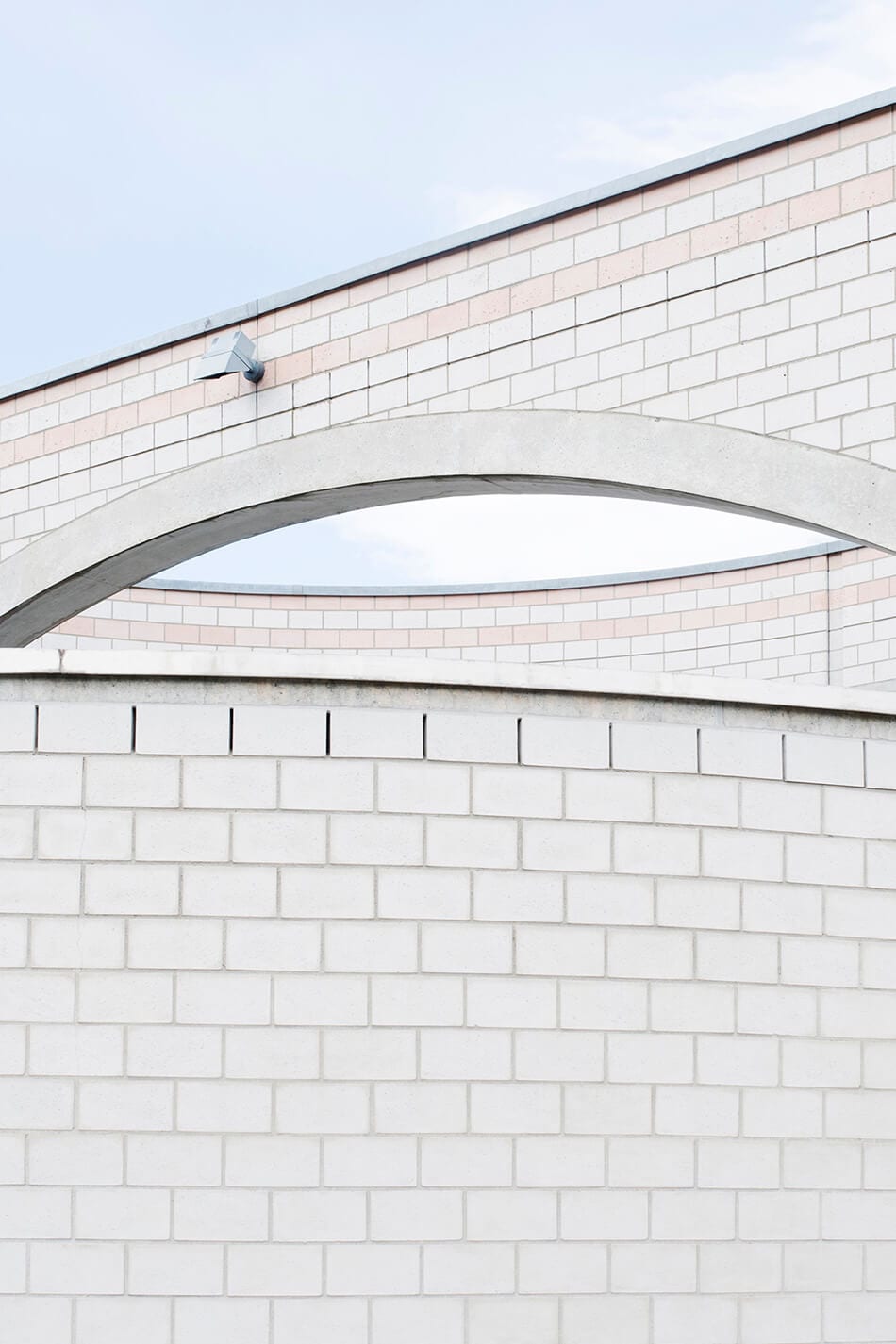
IMAGE COURTESY OF MATEI FOCSENEANU
www.matfocs.com
“The need for freedom has led my family to flee Romanian communism. Today, this same need guides and feeds into my practice. It got me involved in border thinking and enticed me to explore the margins. In this project the margin is prison, more specifically one intended for women. A prison whose supposedly rehabilitative dimension is more than often eclipsed by the purely punitive side of incarceration. With its isolating aspect, incarceration slowly but surely undermines the image of the self and the social identity of the inmates. I have always been fascinated by clothes not only for their aesthetic aspect but also for their implicit communicative capacity. The latter function has proved to be a privileged medium of communication between the inside and the outside of prison. Apparel in pictures establishes a language, a dialogue between the inmate who wears it on the one hand and the eye that looks at the images produced on the other. Apparel take on a significant role in this project especially that the Swiss law does not allow prisoners’ faces to be shown in pictures nor to be recognized. I adopt the language of fashion photography; I use it in this particular context for self-image restoration.”
Editor’s comment: At first this photo seems unassuming – the architectural lines are stark and clean. Until one looks more closely. Until one focuses on the surveillance camera. Excellent commentary on surveillance in the modern world.
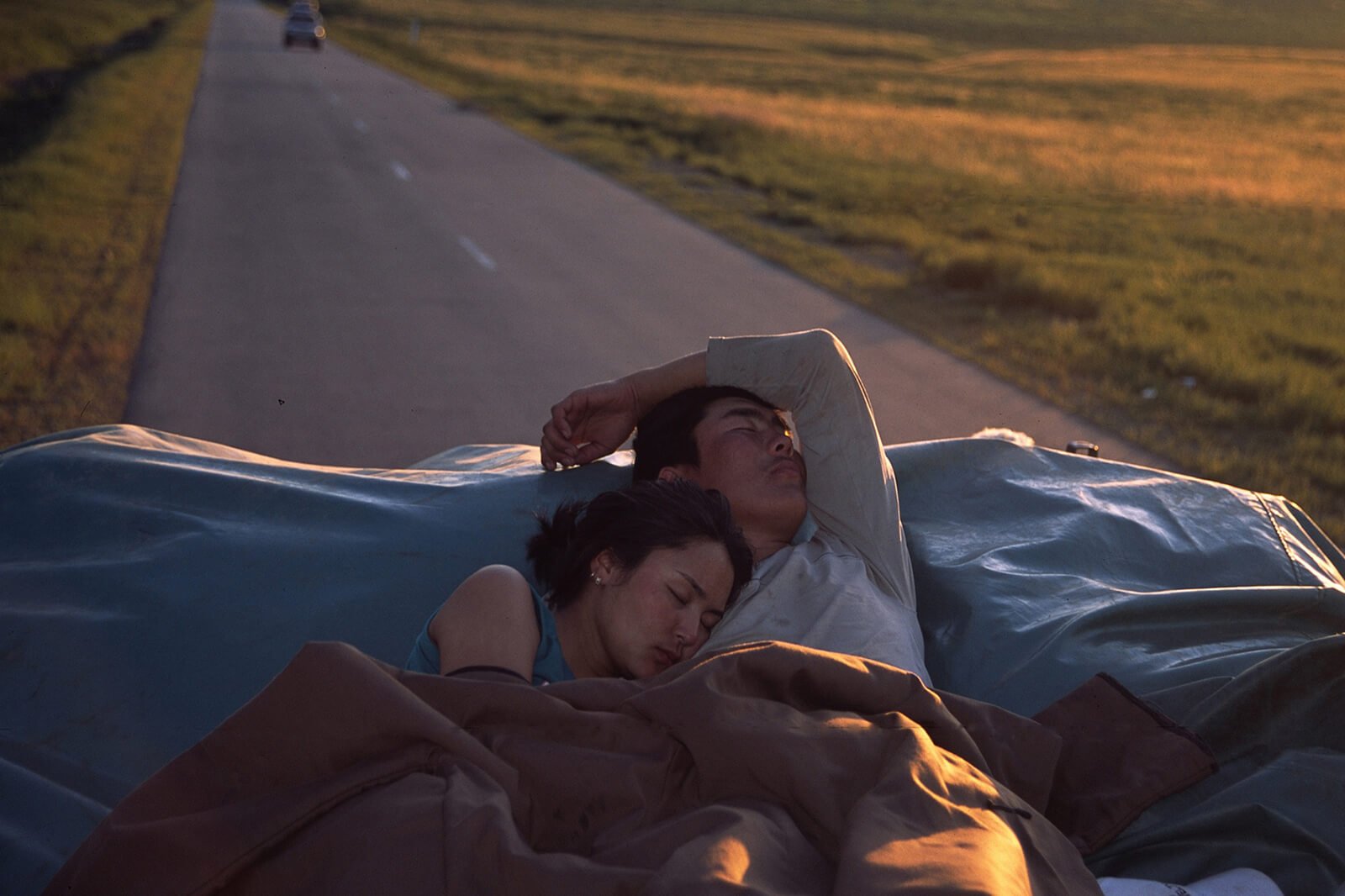
IMAGE COURTESY OF MALGOSIA FROMENTY-BILCZEWSKA
www.malgosia-fromenty.com
Editor’s comment: Washed in the soft tones of a setting sun, this is a gorgeous, intimate view into life and companionship on the road. It feels exciting and inspiring, especially given current times.
